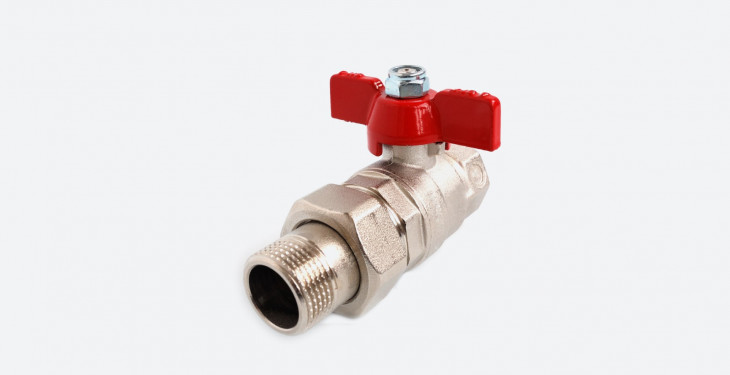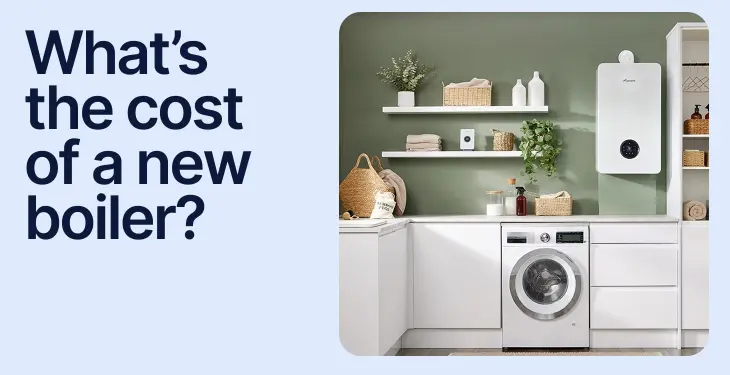Updated: 30th May, 2025

As an online boiler installation company, we understand the importance of keeping your home well heated, especially in the colder months.
Try a new boiler quote, save up to £340 per year (0% APR available).
In this helpful blog we’re going to give you some simple tips and expert advice on how to prepare your property for a testing British winter.
With the hectic winter period in full swing, you may not have had the time or energy to fully assess your home’s heating status and identify any potential weak spots.
Being proactive in these checks can however, make a world of difference when the temperatures outside begin to plummet.
Remember a thorough test includes:

An often overlooked aspect of responsible home heating management, arranging a boiler service, can prove prudent in terms of ensuring your boiler is operating 100% as it should and keeping energy bills as low as possible!
Some basic to-do's such as pilot light checks can be carried out by a homeowner; however, it’s always best to arrange for a qualified Gas Safe registered engineer to carry out a full and detailed boiler inspection of the property’s heating instruments.
An annual boiler service gives you the peace of mind that your boiler is functioning as it should while also protecting you from the very serious danger of carbon monoxide leaks.

It may sound obvious, but being diligent around the home for any windows or doors left slightly open via latches to allow fresh air into the property in the warmer months, can also bolster home heating once they are identified and fully closed.
Door seals and window gaps should also be closely inspected in case they need to be resealed to reduce draughts in the cold season.
Draught excluders in key positions such as behind large access doors may also be a help in terms of reducing the chills while being less frivolous with the heat your boiler produces.

By insulating your property’s pipework, known as ‘lagging’, you can reduce the loss of heat as water circulates around them. This practice can also help to prevent pipes from freezing or bursting.
A frozen condensate pipe can be extremely detrimental to your home’s heating by stopping your boiler working all together, lagging could prevent this!
In case of emergencies (including burst pipes and subsequent property flooding) it is extremely relevant to know the location of your stopcock.
A stopcock is the control tap for your home’s mains water supply, turning this off will cut the cold water system connection helping to limit further damage in the event of a serious leak.
A stopcock is usually located under a kitchen sink and looks like a small tap/valve.

Boilers can be a daunting purchase for many people as they’re an appliance with a lot of responsibility, providing heat for you and your family is something you want to get right. Boilers aren’t exactly a quickly disposable item either, potentially lasting you a decade.
Boiler costs can be split into two segments: the first is the actual boiler itself (unit price), and the second is the cost of the boiler being installed (set up) in your property by an expert engineer.
Here at iHeat, we want to remove all of this undue stress and make the decision making process of upgrading to a new central heating system, as easy as possible.
Boiler costs can vary depending on a number of factors including their brand, model, fuel, output, warranty, labour and installation type. Typically a new boiler will cost between £1,845 and £3,500, below is a list of average boiler installations offered by iHeat (guide only).
Installation Type | Price (inc VAT) | |
Combi to combi swap | £1,845 | |
System to combi conversion | £2,499 | |
New boiler install | £2,899 | |
Back boiler to a combi | £3,299 | |
System to system | £1,945 |
To prepare your house for winter, start by inspecting your home's insulation, sealing any gaps, and making repairs to keep drafts out. Check your heating system, including radiators, electric heaters, and heat pumps, to ensure they are working efficiently. Remember to service your boiler to avoid any unexpected breakdowns and keep energy bills as low as possible.
During winter months, maintain a consistent temperature inside your home, and ensure that your heating system is working efficiently. Bleed radiators that have cold spots at the top to maximise their performance. Regularly clear gutters and downspouts to prevent water damage from ice dams and consider installing a British Standard Jacket for your hot water tank to save energy.
Preparing a house for winter in the UK involves several tasks to protect your home from cold weather. Start by inspecting roof tiles, gutters, and pipes for leaks or damage. Insulate pipes and water storage tanks to prevent them from freezing. Wrap your hot water tank in a British Standard Jacket to reduce heat loss. Finally, check and maintain your heating system, including radiators and boilers, to ensure efficiency.
To keep your room warm during winter nights, ensure that all windows and doors are properly sealed to prevent drafts. Use heavy curtains or thermal linings to retain heat inside the room, and consider adding rugs or other soft furnishings to help insulate your floor. Additionally, introducing a portable heater or electric blanket can give an extra boost of warmth.
Make your house warm and cozy by incorporating soft textures with blankets, cushions, and rugs. Use warm lighting like table lamps and string lights to cultivate a comfortable atmosphere. You can also use draught excluders at doors and windows, and keep your home warm by using central heating or a portable heater on a timer.
To make your house warmer at night, you can close your curtains as soon as the sun sets, trapping the heat inside. Use draught excluders to prevent cold air from entering through gaps. Maintain a consistent temperature with the help of thermostats and timers on your heating system, and make sure radiators are bled to maximise their performance.
Naturally keep your room warm in winter by maximising the sunlight entering during the day, and closing curtains as soon as it gets dark to preserve the heat that has been generated. Adding rugs or carpet to insulate the floor and using draught excluders to block gaps will prevent cold air from entering. Furthermore, rearranging furniture to avoid blocking radiators can also help improve heat distribution within the room.


01st October, 2025
Choose the best boiler brand for your home with the iHeat easy guide.
 Read Article
Read Article

01st October, 2025
Here’s a quick roundup of the best combi boilers for 2025.
 Read Article
Read Article

01st October, 2025
New boiler cost can be a baffling topic, but our iHeat expert guide will clear things up!
 Read Article
Read Article